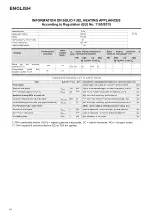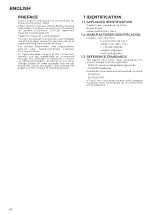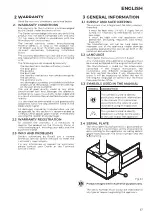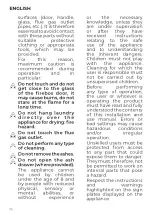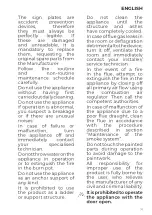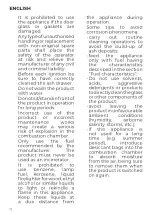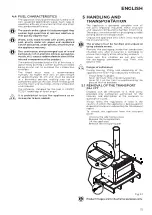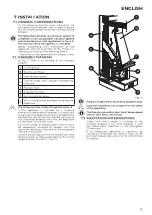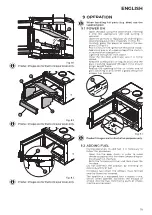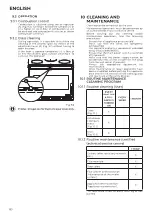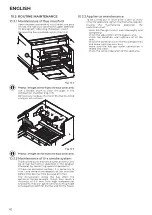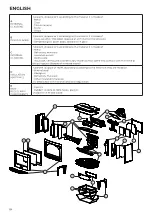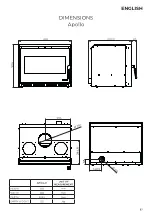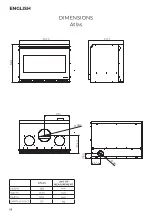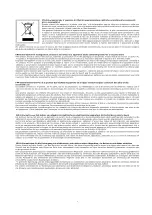
78
ENGLISH
7.8 INSTALLATION IN A FIREPLACE
First of all, place the appliance on the fire bed of
the fireplace. Spread a line of fire-sealant paste
(resistant to 800°C) on the bottom of the collar
(at the top). Then move the appliance to its final
position. This sliding movement can be facilitated
by using two sheet metal guides, not supplied,
2/3 mm thick, placed under the appliance, which
will then be removed after the appliance has
been positioned.
8 COMMISSIONING
8.1 FIRST IGNITION
The first ignition must be carried out by the
installer.
Before commissioning, remove the stickers and
packaging inside the fire box and the external
stickers applied to the glass.
The first lighting operation is a fundamental
operation, used to test the product in full
function, and to gradually evaporate the water
used in the construction mixtures, which will
make it resistant and long-lasting.
First lighting must be carried out with reduced
loads (approximately 1 kg/h), keeping the
appliance on for at least 4 hours at low speeds.
Proceed with these feed rates for at least three
days before using the appliance at its full
capacity. This will allow for the evaporation of
any moisture accumulated in the refractory
elements when not used.
During the first ignition of the item, unpleasant
odours or fumes may be generated due to
the evaporation or drying out of the materials
used, and water may seep from grouting. This
phenomenon will gradually disappear.
For this reason during the first lighting it is
recommended to maintain the premises well
airy.
8.2 COMBUSTION
The wood-fired appliance has been designed for
intermittent combustion. This means the product
will need to be periodically loaded within a time
period that guarantees the complete burning of
the previous load until nothing is left but burning
embers.
8.3 ADJUSTING THE BYPASS VALVE
The insert is supplied with the bypass valve (F)
already adjusted against the box (Fig. 8.3). If the
adjustment is not adequate, recalibrate the valve
in order to obtain good combustion.
Proceed as follows:
STEP
ACTION
1
Fig. 8.1 only for Apollo:
Lift the deflector (D) and remove
the post-combustion plate (A)
2
Remove, in this order, the back wall
(B), the side walls (C) and the upper
deflector (D) (Fig. 8.2)
3
Loosen the screw (E) in order to
place the bypass valve (F) against
the box (Fig. 8.3)

